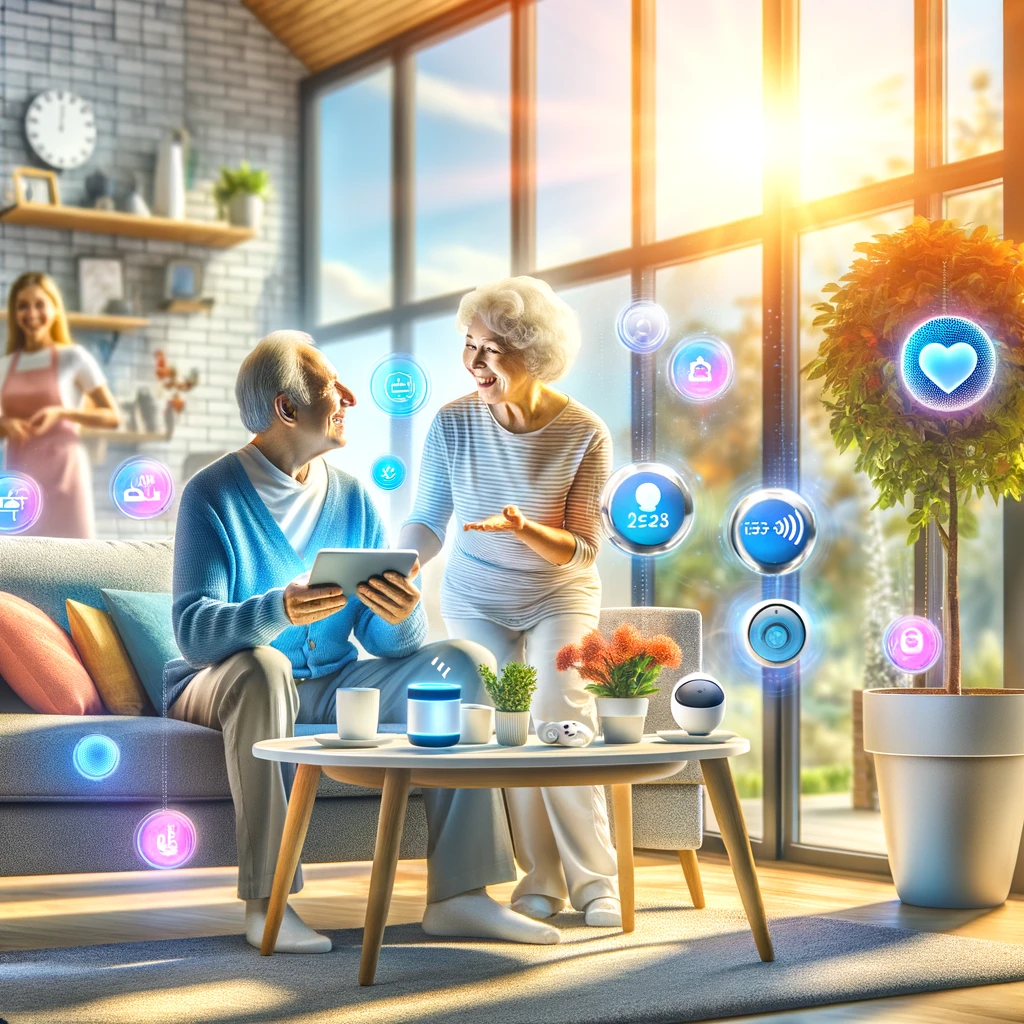Opportunities for Senior and Caregiver Smart Home Solution Companies
The market for smart home solutions tailored specifically for seniors represents a significant growth opportunity. The assisted living and smart home market for older adults is valued at $83.6 billion in 2022 and is projected to expand at a compound annual growth rate (CAGR) of 18.2% from 2023 to 2030). As outlined in our mission statement, “You will be a caregiver, are a caregiver, or have been a caregiver” through the stages of aging. This is why we feel seniors and caregivers are fundamentally linked from an industry perspective.
The enormous growth of these demographics can benefit greatly from smart products and services tailored to their needs. The competitive landscape for aging-focused smart home solutions is still emerging. Companies have the chance to establish a first-mover advantage by developing and launching innovative products and services aimed at helping older adults and the physically/mentally challenged live comfortably and safely at home. Tools like AI and Chat are primed to contribute greatly to this innovation. Focusing product design and marketing on this growing and underserved market provides an opportunity to gain loyal customers and word-of-mouth referrals. Products can be improved through ongoing user testing and feedback from real seniors and caregivers. Product improvement is especially important as seniors go through the various stages of aging. Companies embracing this opportunity can be leaders in the fast-growing senior and assistive living-smart solutions market. These solutions are required for both devices and services.
Benefits of Smart Home Technologies for Seniors and Caregivers
Smart home technologies can offer seniors and caregivers several important benefits, such as increased safety, convenience, and independence. Devices like fall detection sensors and automatic lighting allow seniors to be more secure and reduce risks within the home environment. Strategically located sensors can detect seniors’ activities and if they have fallen. These sensors will automatically send alerts to caregivers, family members and professional help based on the type of emergency. Seniors and caregivers may also feel safer knowing voice-activated assistants with emergency contact features are easily accessible.
Smart home automation also streamlines many daily tasks for seniors through conveniences like online shopping, ordering groceries, and concierge services. Smart devices can be programmed to turn lights on or adjust temperatures based on personalized schedules and preferences. Voice assistants like Alexa allow seniors to control devices hands-free by giving vocal commands. Automating mundane tasks can give seniors, especially those with mobility limitations, greater freedom and less reliance on caregivers.
Smart home technologies also promote independence by enabling seniors to perform tasks, engage socially, and monitor their own health. With medication reminders, calendar alerts, video chat devices, and wearable health trackers, seniors can take greater ownership of managing their health and daily routines with less assistance needed from others. Living more independently is empowering and can significantly impact confidence and quality of life.
Tailoring Smart Home Solutions Specifically for Seniors
Smart home technologies promise increased convenience and independence for seniors and caregivers, but only if the solutions are intentionally designed for their needs. Companies have a major opportunity to tailor their products and services specifically for seniors aging in place or caring for a loved one.
User-friendly interfaces and controls are crucial when developing smart home tech for the elderly. As we age, declines in vision, hearing, dexterity and cognitive function can make using complicated devices and apps challenging. Products should have simplified, intuitive controls, easy-to-read text and icons, voice activation capabilities, and automation that minimizes the need for direct input.
Remote monitoring and alert systems enable caregivers to check on seniors remotely while allowing independence. Sensors that detect falls, monitor vital signs, or track activity patterns can notify caregivers if emergency assistance is needed. Video feeds give caregivers a view inside the home without being physically present.
Finally, integrating different smart devices into a unified system amplifies their benefit. For example, a voice assistant could provide medication reminders while controlling lighting, temperature, and entertainment. The system could notify caregivers if medication reminders are missed or the home environment becomes hazardous. A holistic approach allows various devices to work together seamlessly.
Taking a Customer-Centric Approach to Senior Smart Home Development
A customer-centric approach is crucial when developing smart home solutions tailored for seniors. This involves continuously engaging with seniors and caregivers throughout the product development and testing phases. Getting ongoing feedback from the target users enhances the overall user experience and builds market trust and credibility for the solutions.
Companies should commit to involving seniors and caregivers directly in prototype testing, user interviews, focus groups, and other forms of research. This ensures that products are as user-friendly, intuitive, and customized to seniors’ needs as possible. Understanding what drives customers’ interests and needs in smart home devices could help strike the right balance between application, ease of use and features.”
By taking a customer-centric approach focused on seniors’ user experience, companies can establish themselves as trusted providers of smart home products and services for the aging population. Their commitment to continuous improvement based on senior consumers’ evolving needs also further differentiates them in the market. Overall, placing seniors at the heart of the development process improves outcomes for companies, older adults, and those they care for.

